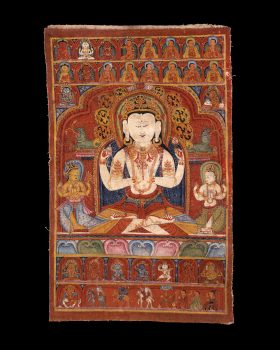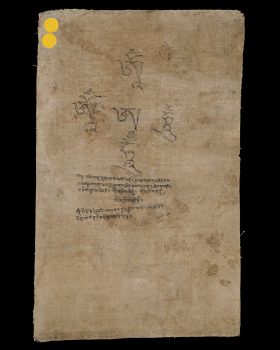Ladakh, Northwestern India
14th century


Ladakh, Northwestern India
14th century


Buddhist practitioners in some traditions believe that cutting through ordinary perceptions that keep us in the endless cycle of death and rebirth, known as samsara, can create a powerful and enhanced divine identity that leads to enlightenment.
The cultivation of a strong aspiration to help sentient beings overcome suffering. In Buddhist Mahayana teaching, compassion is the seed for attaining full enlightenment.
Prescribed practices that carry symbolic meaning and value within a specific tradition and are intended to attain a desired outcome. Rituals are usually done as part of a ceremony or regular routine.
Beings who aspire to become fully awakened like the Buddha and are dedicated to helping others on the path to enlightenment.
From the 8th to 13th century, Kashmir was a renowned center of Buddhist learning, arts, and culture. This fertile valley was a major source of artistic production for the western Himalayan kingdoms, which spanned parts of northern India and the Ngari region of western Tibet.
Get the latest news and stories from the Rubin, plus occasional information on how to support our work.